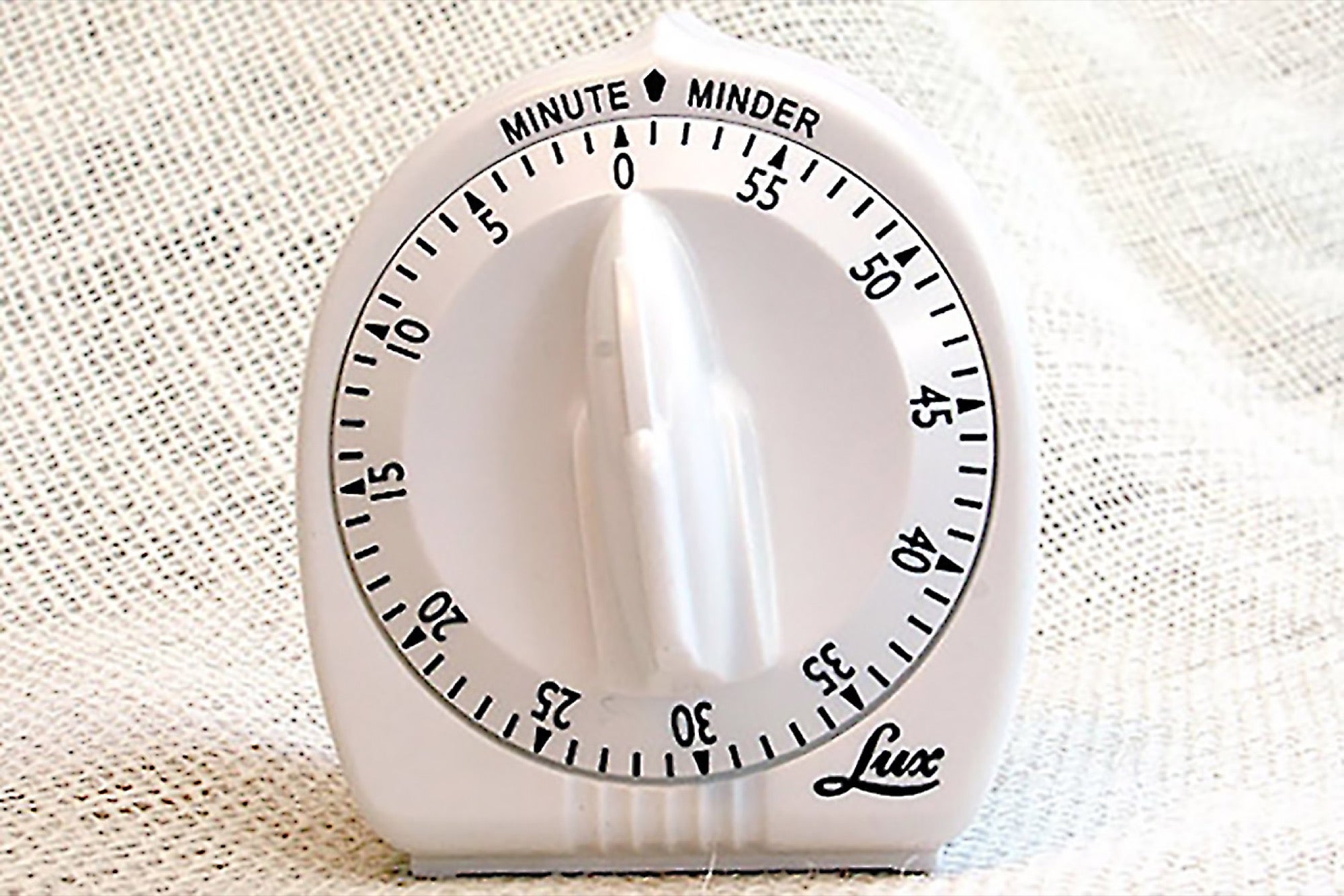The Surprisingly Simple Productivity Time Saver Five easy steps to improve your focus and get more work done using a kitchen timer.
Opinions expressed by Entrepreneur contributors are their own.

The timer that rings when your pizza is done can also help you become more productive at work. Francesco Cirillo was a student at Guido Carli International University, a business school in Rome, in the early 1990s when he discovered the impact of timing tasks.
"I was easily distracted and unable to focus," he says. "So I decided to give myself a challenge: study without interruption for 10 minutes." He used a tomato-shaped kitchen timer to keep track.
It took a few tries, but with practice and repetition the tool improved Cirillo's study process, and 10 minutes eventually turned into 25 minutes of focus. A few years later, he used the timer in his job as a software developer for a European bank and found it strengthened his productivity. He named his system the Pomodoro Technique, after the Italian word for tomato.
Related: Productivity Lifesaver: The 5-Sentence Email
Cirillo shared the idea with coworkers, who found the technique helpful. Through years of observations and measurements, Cirillo found the 25-minute work session maximized attention and minimized the chance of interruption. He wrote a free book to share his technique, available on his website which has been downloaded by more than two million people.
By breaking work into regular, repeated intervals, entrepreneurs alleviate anxiety, enhance their focus and strengthen their determination for achieving goals, says Cirillo, who launched Pomodoro workshops in 2010 to help owners of startup companies effectively use their time. He offers these five simple steps to get started:
1. List your tasks.
At the beginning of each day, choose the things you want to tackle and write them down on your to do list.
2. Start the first timed session.
Start with a 30-minute session made up of 25 uninterrupted minutes of work plus a five-minute break. Set the timer for 25 minutes and start the first activity. Position the timer so you can clearly see how much time is left. When the timer rings, this signals that the current activity is temporarily finished. Put an X after the task on your to do list.
3. Take a break.
When the timer rings, work must stop, even if you're convinced you could complete the task at hand in the next few minutes.
"The three to five minute break gives you the time you need to disconnect from your work," says Cirillo, who suggests using the time to do something good for your health, such as taking a short walk.
4. Repeat.
After each Pomodoro, put another X next to the task until it is complete. Then cross the task off your list and move on to the next task. Every four "Pomodoros", take a longer break, from 15 to 30 minutes.
5. Review the results.
At the end of the day, examine your to do list; it reveals valuable information. The number of Xs listed after each task will help you estimate the time it will take to complete future projects. You'll also be able to gauge your productivity; the number of Pomodoros you complete each day will reflect how much time you focus on work.
"Applying the Pomodoro Technique in a small business is a win-win solution," says Cirillo. "Business owners have the opportunity to objectively observe the way they work and find areas where they need to improve their work process."
Related: 5 Steps to Rescue Your Productivity When Days Go Bad







